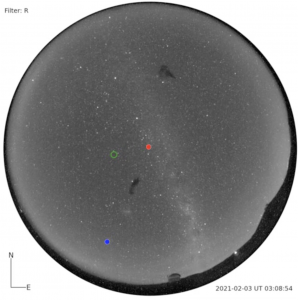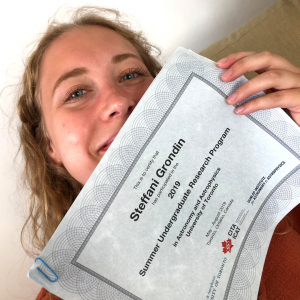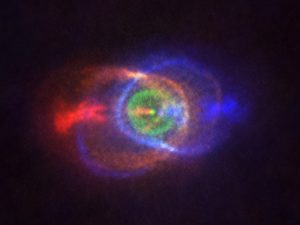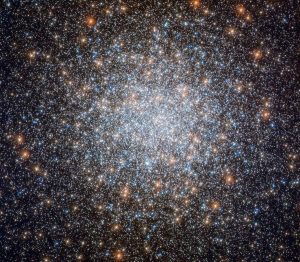Steffani is a second year PhD student in the Department of Astronomy and Astrophysics at the University of Toronto, specializing in binary systems and stars that have escaped their birth cluster. She received a Combined Honours Physics and Astronomy degree from the University of British Columbia where she studied pulsars and white dwarfs. She also studied radio transients as a participant in the Summer Undergraduate Research Program at the University of Toronto.
When she isn’t debugging her code, you can find her hiking, racing triathlons or shooting film on her 85-year old camera.
How did you first become interested in Astronomy and Astrophysics?
Growing up in rural British Columbia, I never saw myself becoming an astronomer. I always loved science, but applied to university programs in biology with the goal of becoming a medical doctor. However a couple months before the end of high school, I read Stephen Hawking’s A Brief History of Time because I thought it would be funny to read a science book in English class. I probably understood less than 90% of the book, but it really inspired me about the vastness of the Universe and how much is still waiting to be discovered!
Can you tell us a little bit about your specific field of research?
Mainly, I’m interested in understanding how stars in binary systems and clustered environments evolve. To obtain a close binary system (and one day form gravitational waves), it is believed that the system must undergo a common envelope phase, where one star overflows material onto the other, causing the system to become engulfed in a “common envelope.” Although most binaries expect to undergo common envelope evolution, this mechanism is poorly understood. To resolve this issue, I’m currently searching for new post-common envelope systems to better constrain this important evolutionary phase. Recently, I’ve also become interested in star cluster evolution; specifically how stars and binary systems escape from clusters and populate the Galactic halo over time. By using machine learning methods and simulations, we can identify escaped (extra-tidal) stars to better understand how star clusters and even the Milky Way evolve!
What’s the most exciting thing about your research?
I absolutely love ”needle in a haystack” astronomy where you’re trying to find one super unique object out of millions of stars. This is especially exciting in my observational research as I get to use huge telescopes to gather spectra of the unique systems I find. Being the first person to ever classify a star or binary system across the galaxy is incredibly exciting!
What do you hope will be your next step, professionally?
I’m only in the second year of my PhD, so I hope to continue honing my astronomy interests through new observations and discoveries I make along the way. Throughout the program, I also hope to get more undergraduate students involved in research and spread the wonders of the Universe to others through astronomy outreach. Combining astronomy research, teaching and mentorship would be my ultimate professional goal, so hopefully one day I’ll be able to make a career out of being a professional astronomer!

Remote observations at the Las Campanas Observatory in Chile’s Atacama Desert. Observing during the pandemic has been a challenge, but I’m super grateful for the amazing staff who have helped us gather our data! (Credit: Steffani Grondin)




